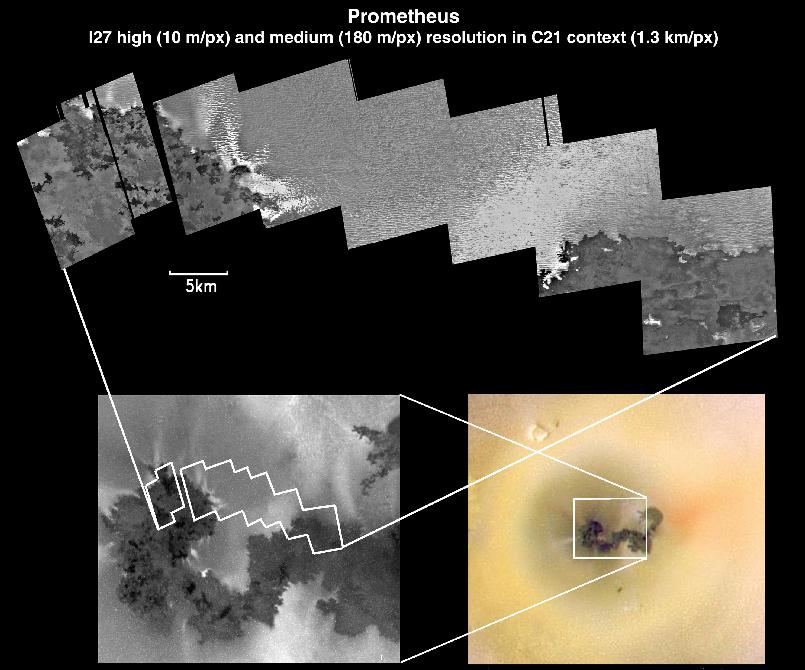

This composite of images, all acquired by NASA's Galileo spacecraft, contains three views of Io's volcano Prometheus at three different image resolutions. The upper mosaic consists of 8 high resolution frames (12 meters or 39 feet per picture element), the lower left image is a single medium resolution frame (170 meters or 186 yards per picture element), and the lower right mosaic consists of several low resolution color frames (1.3 kilometers or 0.81 miles per picture element). The high and medium resolution frames were obtained during the Galileo spacecraft's third close flyby of Io on February 22, 2000, while the low resolution color context frames were obtained on June 30, 1999. North is to the top of all images, and the high resolution mosaic spans about 65 kilometers (40 miles) from east to west. The high resolution mosaic is centered at 13.4 N, 155.3 W.
At increasing resolution more surface details about Prometheus become clear. For example, dark spots on the Prometheus flows at lower resolution resolve into dark, fresh lava flows with well-defined margins at higher resolution. Bright spots along the margins of Prometheus resolve into bright streaks that appear to be implaced by plumes emanating from the edges of the Prometheus flows. And the terrain surrounding Prometheus, which appears relatively smooth at lower resolution, resolves into a complex material composed of rough, ridge-like features. Also visible in the rightmost frame of the high resolution mosaic (on the northern edge of the very dark lava flow in the lower right corner) are two bright spots, which may indicate active, glowing lava breakouts.
Image produced by: Dave Williams, Arizona State University
The Jet Propulsion Laboratory, Pasadena, CA manages the Galileo mission for NASA's Office of Space Science, Washington, DC. JPL is a division of the California Institute of Technology, Pasadena, CA.
This image and other images and data received from Galileo are posted on the World Wide Web, on the Galileo mission home page at http://galileo.jpl.nasa.gov/. Background information and educational context for the images can be found at http://galileo.jpl.nasa.gov/images/io/ioimages.html.
NASA's Planetary Photojournal PIA-02564
October 26, 2000